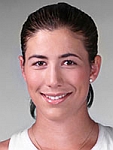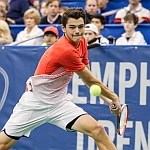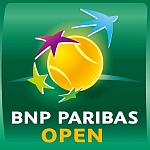Notice: Undefined variable: page_title in /home/tennisne/public_html/wp-content/themes/dante-child/single.php on line 205

Copyright © 2015. No duplication is permitted without permission from Bob Larson Tennis.
Men’s Look Forward: US Open
Roger Federer could have skipped Cincinnati as well as the Canadian Open for all the difference it made.
Had Federer been the #3 seed at the US Open, he would have been guaranteed to have had to face Andy Murray and Novak Djokovic in the last two rounds if he wanted to win the title. By making it to #2, he gave himself a 50% chance of not having to face both.
But, of course, that still left a 50% chance that he would face both, and that is the chance that came off. Federer, the #2 seed, is drawn to face #3 Murray in the semifinal (and, of course, #1 Djokovic in the final). Djokovic, who is in a little bit of a US Open title drought, lucked out and drew #4 Kei Nishikori for his semifinal opponent.
Indeed, we could make a case that Djokovic lucked out to the maximum extent possible. There are 24 possible quarterfinals draws (that is, 24 different ways to draw seeds #5-#8 against #1-#4), and two possible semifinals, for a total of 48 possible last three rounds — and, mathematically, Djokovic faces the weakest possible seed in every case: #8 Rafael Nadal in the quarterfinal, then #4 Nishikori or #7 David Ferrer in the semifinal, then whoever comes out of the bottom half. To be sure, in practice it would probably have been nicer still for Djokovic to face Ferrer in the quarterfinal, since Ferrer has been out since the grass season — but Nadal isn’t in any sort of form either. It’s a draw that could have been designed to get him to the final.
Not so the bottom half, where Murray is drawn to face Roland Garros winner and #5 Stan Wawrinka (who, keep in mind, has as many Slam titles in the last two years as Murray has in his career) in the quarterfinal, and Federer is drawn to face #6 Tomas Berdych.
Things are a little more balanced when it comes to the early rounds. Djokovic will at least have to be alert for his second round, where he is likely to face Vasek Pospisil. His third round is against #25 seed Andreas Seppi. Then comes #14 David Goffin, or #23 Roberto Bautista Agut — or maybe Jerzy Janowicz, or Pierre-Hugues Herbert or Pablo Carreno Busta, both of whom did surprisingly well at Winston-Salem.
We’d still say Federer has the tougher draw, though. He opens against Leonardo Mayer, who is the top unseeded player. Then probably Marcos Baghdatis. Then #29 seed Philipp Kohlschreiber, or maybe Lukas Rosol, although Rosol is in sad shape these days. Then comes the artillery barrage. In the fourth round, Federer would face the winner of a third round contest between #13 John Isner and #21 Ivo Karlovic (unless someone else, perhaps Jiri Vesely, interferes). That third round could well see Karlovic set the all-time record for most aces in a career.
Murray’s opener is interesting in another way: He starts against Nick Kyrgios. Obviously Kyrgios is very talented. But will he be able to stay civilized? One suspects that that will be what a lot of fans will be watching. In the second round, Murray would take on Adrian Mannarino, another guy who just missed seeding. Then comes #30 seed Thomaz Bellucci, then #15 Kevin Anderson or #20 Dominic Thiem. Frankly, if Murray wins his opener, it looks like smooth sailing from there to the quarterfinal.
#4 Kei Nishikori, who hasn’t been able to play much lately, had better recover fast, because he opens against Benoit Paire, who has been in pretty good form lately although he looked bad at Winston-Salem. Radek Stepanek might follow, then #26 Tommy Robredo — who may be more of a threat than he seems; he had a good U. S. Open last year. Then comes #16 Gael Monfils or #19 Jo-Wilfred Tsonga, neither of whom is playing his best right now. Jarkko Nieminen is also in that part of the draw; he will play what will probably be his last Slam match in the first round against Tsonga.
#5 Stan Wawrinka seems unlikely to be troubled in the first two rounds, but he has to face #28 Jack Sock, or maybe Gilles Muller, in the third. In the fourth, he’ll be up against #11 Gilles Simon, trying to clinch his Top Ten ranking, or maybe #22 Viktor Troicki. Ernests Gulbis is also in that part of the draw.
#6 Tomas Berdych also looks good for the first two rounds. In the third, he’s supposed to face #31 Guillermo Garcia-Lopez, but Garcia-Lopez looked bad at Winston-Salem. Sam Querrey might be a better bet, or just possibly Janko Tipsarevic. But it’s in the fourth round that things really get interesting, since he’s drawn to face #12 Richard Gasquet or #24 Bernard Tomic. Thanassi Kokkinakis is also in there (he opens against Gasquet), and Lleyton Hewitt will be playing his last US Open.
We have no idea if #7 David Ferrer is really ready to play, but if he isn’t, he at least should have two easy round to get back on track. It gets a little harder after that; he’s supposed to face #27 Jeremy Chardy, or maybe Martin Klizan or Florian Mayer. Then it gets really interesting. If you have been wondering where the defending champion is, Marin Cilic is #9 and in Ferrer’s eighth. He’ll have to face #17 Grigor Dimitrov in the third round. There are a lot of struggling players in that part of the draw; we’ve no idea what to expect.
#8 Rafael Nadal also has several slumping players in his section — but not in his first round. He opens against Borna Coric, who would actually be seeded if the new rankings were used. Whew! The second round is easier. In the third, the seed is #32 Fabio Fognini — but Fognini has to open against Steve Johnson, then probably Pablo Cuevas. Lots and lots of upset potential there. Nadal’s fourth round is even more interesting, because the players in that section are #10 Milos Raonic, #18 Feliciano Lopez, Fernando Verdasco, Tommy Haas, Mardy Fish, and Tim Smyczek. So we have the guy who so famously let Nadal off the hook at the Australian Open (Smyczek), three guys (Lopez, Verdasco, and Haas) who bring tremendous experience to the table, one struggling big server (Raonic — but Nadal really doesn’t seem fond of facing big serves on hardcourt), and one guy (Fish) looking to go out with a bang. Sure, if Nadal were at his best (we have no idea if he is), it’s a section he’d handle easily. Still, it feels as if we’ll get most of our best stories out of that part of the draw.
The Rankings
This week is another odd one: because the US Open is a year later this year than last, not only is the US Open coming off but also the events the week after — notably the Davis Cup semifinal, in which Roger Federer won two live matches and Stan Wawrinka, Richard Gasquet, and Jo-Wilfried Tsonga one each.
But that’s only four guys, and even for them, the U. S. Open tends to be bigger — especially for Federer, who was a semifinalist last year. Novak Djokovic was the other semifinalist, with Kei Nishikori the finalist and Marin Cilic of course the champion. The quarterfinalists were Andy Murray, Wawrinka, Tomas Berdych, and Gael Monfils (interesting to note that the top six players in the world were all quarterfinalists or better last year). Of the rest of the Top Ten, Milos Raonic lost in the fourth round, David Ferrer in the third, and Rafael Nadal did not play.
Djokovic is safe at #1, and by thousands of points — even in the worst case scenario, in which he loses his opener and Murray wins the whole thing, he’ll have a 3500 point lead on Murray. #2, though, is very much up in the air. Murray, since he has less to defend, has a slight lead on Federer, although it’s close enough that whoever lasts longer will likely be #2. But Murray will win ties. If the seeds hold and they meet in the semifinal, of course, the winner is #2.
Federer and Murray are certain to be #2 and #3 in some order.
Because Nishikori has so much to defend, he goes in more than 300 safe points behind Stan Wawrinka, and less than 150 ahead of Tomas Berdych. Wawrinka has the clear advantage in the contest for #4, but Wawrinka or Berdych have genuine shots at it. Everyone else is pretty far behind — Nadal, #7 in safe points, is about 1200 points behind Berdych, meaning that the only way he can rise above #7 is to win the title. That might get him as high as #4, but it’s not very likely, given that he’s almost 1700 points behind Wawrinka. We’d guess a title would make him #5 — and, given recent form, it seems very unlikely he can win the title anyway.
Ferrer is almost tied with Nadal in safe points, although he trails slightly and hasn’t been able to play. From Ferrer at #8 to Raonic, #9 in safe points, is 900 points. So it is safe to say that Djokovic, Murray, Federer, Wawrinka, Nishikori, Berdych, Nadal, and Ferrer will be Top Ten when this is over. Who gets that last two Top Ten spots? It probably won’t be defending champion Cilic, who is down around #20 in safe points and needs at least a final, and probably a title, to stay in the Top Ten. Raonic is a good bet, and Gilles Simon is also a strong candidate; Raonic is 550 points ahead of John Isner, #11 in safe points, and Simon has a 400 point lead on Isner.
Other than Cilic, it doesn’t look as if anyone will fall out of the Top Fifteen this time; Kevin Anderson, #15 coming in, is at #14 in safe points and is more than 300 points ahead of the next player. At the bottom of the Top Twenty, things are a lot more interesting, with Grigor Dimitrov down to #18 in safe points, then Cilic, then Gael Monfils, and Jo-Wilfried Tsonga down at #22 in safe points. The leading candidates to replace them are Ivo Karlovic (who is at #15 in safe points) and Viktor Troicki; Dominic Thiem also has a pretty good shot.
Likely to fall out of the Top Thirty is Philipp Kohlschreiber, unless he somehow manages to get John Isner in his sights again. After meeting in the third round for three years straight, they could meet in the fourth round this year — but only if Kohlschreiber beats Federer.
Copyright © 2015. No duplication is permitted without permission from Bob Larson Tennis.





